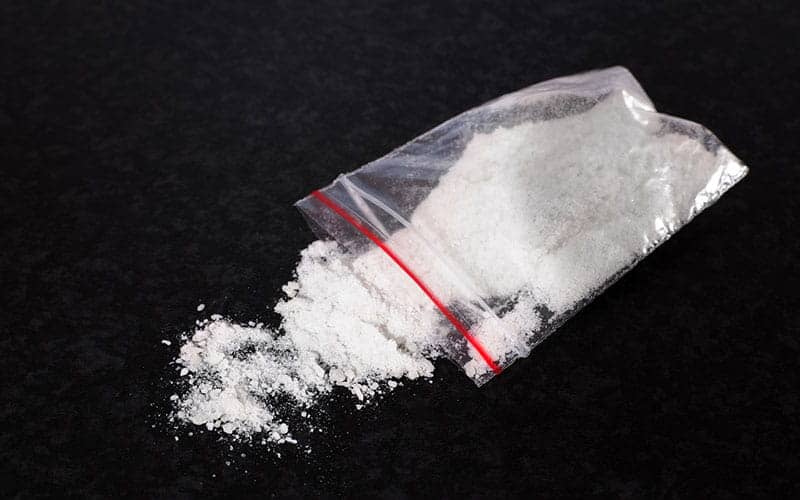Ice/crystal meth has become the most potent and dangerous drug on Australian streets and the ice epidemic effects are being felt in hospitals, schools and, most particularly, in the criminal justice system.
The effect that this epidemic has had on violent and drug crime and, by extension, the prosecution of such offences is nothing short of explosive and astonishing. What turns an otherwise calm, functional person into a violent, paranoid, addict committing various crimes to fund their addiction or their delusions or both?
In its report on the crystal meth trade in Australia, the Australian Crime Commission labelled it the ‘highest risk to the Australian community and is of significant national concern’. Since 2010, the authorities have identified an increase in ice on the Australian market and, since 2013, it has been the dominant form of drug in use. Whilst previously it was a drug that was manufactured in Australia for the Australian user, the Crime Commission notes that it has observed an increase in border detection as traffickers attempt to introduce purer forms of the drug into the Australian market from overseas. The increase in demand for the drug has resulted in escalated involvement of organised crime groups, invested in the production and distribution of ice, as well as the distribution of the precursor chemicals used to make ice. These chemicals themselves are extremely valuable as a relatively small quantity can produce significant quantities of ice.
Ice is a very pure form of methylamphetamine, a manufactured stimulant drug. It can be smoked, snorted, injected or consumed orally. It is incredibly potent and extremely addictive. Its effects can be felt in as little as 3-7 seconds and its effects can last between 6 hours and several days. Most particularly, ice users report an inability to sleep for days after using, due to the stimulant effect of the drug. This can make the drug attractive to individuals who want to or need to stay awake for long periods of time (ie because they are doing long shifts at work). The drug is also associated with elevated feelings of pleasure and confidence, increased sex drive and reduced appetite. Given the numerous ways that it can be ingested, many users are (for at least a little while) able to hide their use.
However, we have seen first hand how devastating the drug can be to individuals and families. We have seen hard working young men and women, who have never offended before, come to us charged with (and usually remanded in custody for) serious offences, including drug trafficking, armed robberies, burglaries and violent offences. We have seen middle aged men leave their families, bankrupt their businesses and end up in prison due to their addictions. Most commonly, clients addicted to ice report that they were addicted from the moment they first smoked, injected or otherwise consumed it. People with no previous substance abuse or addiction issues quickly become addicted and, through their addiction, they begin to associated with other addicts. It is these associations that can be most damaging, as these people with no previous experience of drug use or the trade that accompanies it become entangled in the ‘drug world’ which is both expensive and dangerous.
The physical effects of the drug include paranoia, hallucinations, violent and aggressive tendencies, restlessness and agitation, anxiety, teeth grinding, the feeling that bugs are crawling under your skin with the urge to scratch, dry mouth, increased heart rate leading to heart problems, kidney problems, stroke, and lung problems. There is the perpetual risk of overdose when a user underestimates the quantity or purity of the ice they are about to consume. In our experience, a person addicted to ice needs a significant period of detoxification before they can start to ‘see the wood from the trees’ and coherently speak with you. Often their perspective is altered by the high state of arousal they are in, the anxiety and paranoia that they feel. People significantly addicted to ice (particularly those who have been using it long term) can be incredibly unpredictable and violent, which not only brings them into contact with the criminal justice system but makes them a risk to themselves and those around them.
Apart from the physical effects, an addiction to ice brings with it family devastation and, financial problems as the user becomes dependent and needs money to fund the increasing cost of his or her use. This cost only increases if the person is charged with offending related to their use, which imperils their job and requires that they pay for legal representation. It only takes the detection of a relatively small amount of ice to lead to serious drug charges. We have frequently observed that as people become more and more addicted and desperate for the funds to feed the addiction, their family and friends stop providing them with funds in an effort to help them. This can lead them to commit random and opportunistic offences, such as thefts, robberies and the like to obtain quick money for the next hit.
Between 2013 and 2014, the Australian Bureau of Statistics reported that there had been an increase of 15% across Australia in the number of illicit drug offences finalised in the Courts. The Bureau attributes that to a 12% increase in the prosecutions for possession and use of illicit drugs, as opposed to the increase in prosecutions for trafficking and sale. These statistics indicate that drug use is increasing on an incredible scale across Australia. The Australian Drug Foundation reports that of the users surveyed by them, over 50% nominated ice as their drug of choice. Since the epidemic began in 2013, the number of ambulance attendances for drug related injuries has increased by 88% in Melbourne and 198% in regional Victoria, which is attributed exclusively to the increase in ice use across the state. Our community has also seen an increase in reports to child protection agencies since ice became a serious problem. It is estimated that 1/3 of reports of child abuse and neglect involve the drug, ice, and now a new demographic of middle class parents are attracting the attention of human services departments. Middle class parents who were otherwise loving and attentive are becoming neglectful and even abusive after taking up the drug.
As terrible as the effects of use can be, withdrawal can also be a horrible process, particularly if this withdrawal is unassisted, as is the case for people detoxing in custody. A person may experience:
- intense cravings for the drug;
- anxiety, depression, restlessness and distress;
- increased appetite combined with nausea;
- aches and pains;
- restless sleep and nightmares;
- exhaustion; and
- irritability and aggression.
The increase in the number of people withdrawing from ice in custody, puts additional pressure of corrective services and police stations who initially house people placed into custody, as they deal with the fall out from their withdrawal. In our view, the system is ill equipped to deal with people suffering from withdrawal and often prisons are overcrowded and poorly staffed. Corrections officers and police are often, quite unfairly, placed in a position where they have to look after high risk individuals suffering from withdrawal and the effects of the drug itself. Frequently, if a person is remanded in custody and wishes to apply for bail, we do so on the basis that the he or she will enter a residential rehabilitation facility to treat their addiction, which is often the root cause of their offending. This assists to alleviate the pressure on the system and also to assist the Accused to get the help they need. It is also important that, if a matter is to proceed as a plea of guilty, the Accused person detoxifies and abstains from using drugs so that when their matter is finally resolved in Court, we can demonstrate how they have rehabilitated and treated the cause of their offending.
We have access to the very best drug and alcohol rehabilitation specialists, psychologists, psychiatrists and rehabilitation centers. We utilise our contacts with consultants to obtain the very best help for our clients to hopefully not just guide them through the criminal process, but also to guide them through recovery and hopefully save their futures from the devastating effects of ongoing addiction. We believe that a holistic approach is required in both the medicinal, psychological and legal spheres to obtain the very best results for our clients.
Ice use is a complex problem, in the medical and legal spheres, and there is no easy solution to it. As ice use continues to escalate, the legal community is faced with unpredictable and violent people who commit otherwise uncharacteristic acts to fund and support their addiction. It is essential that if you or someone you know is descending into ice addiction that help is sought early. Unfortunately, many people require a prison sentence before they fully grasp the depths to which they have fallen. However, if someone you know is facing a term of imprisonment, or is remanded in custody, as a result of ice-related offending, you should contact our office for a complementary appointment to discuss the matter and, hopefully, get the help required.
If you are in need of a drug offence lawyer or organised crime lawyer, don’t hesitate to get in touch with the team at Galbally Parker.


